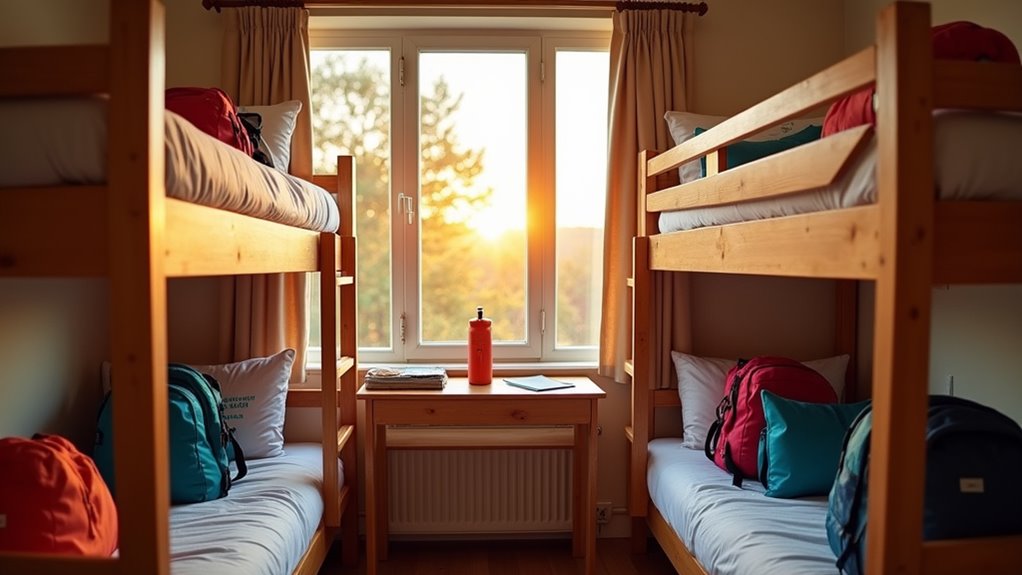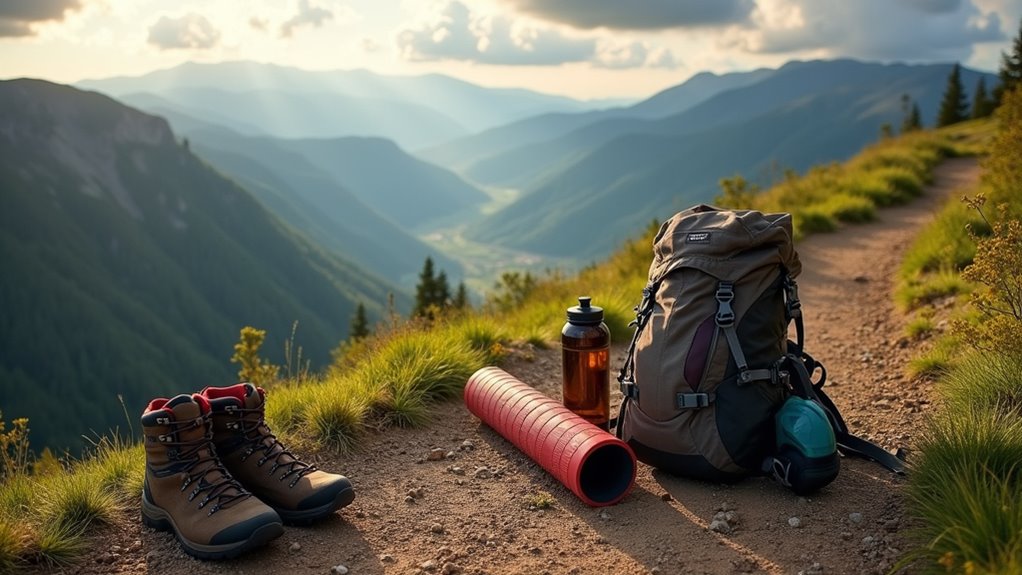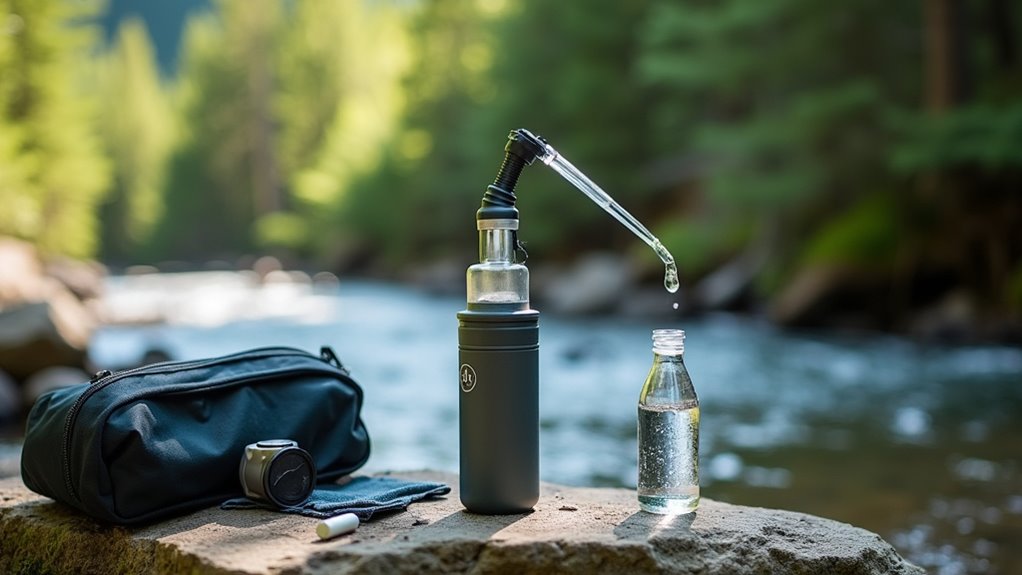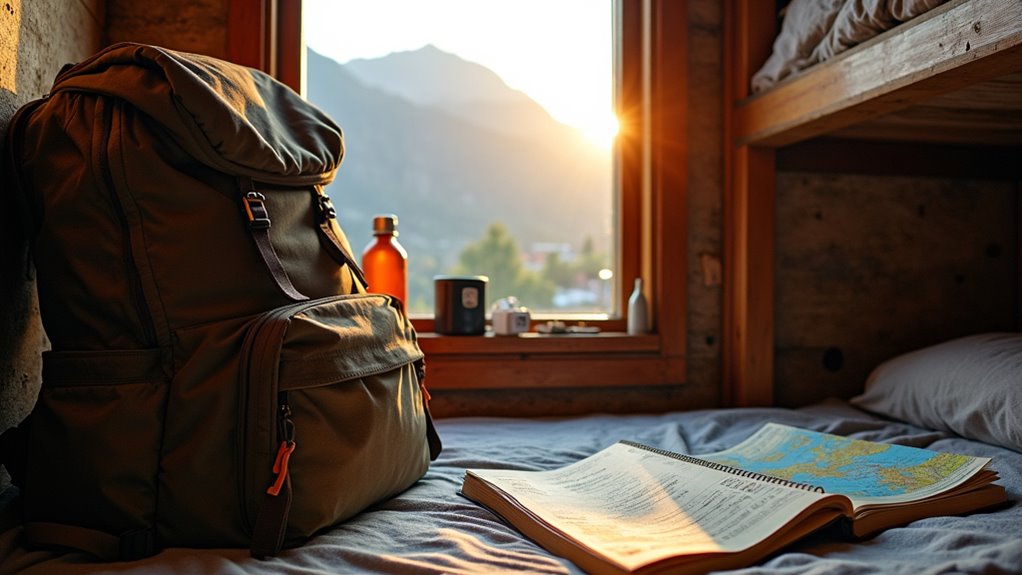To get in shape for hiking this season, you’ll want to combine brisk walking or inclined treadmill sessions three to four times a week with lower body strength moves like jump squats, step-ups, and lunges. Add core workouts such as planks and bridges, along with stability drills like single-leg stands and lateral hops to handle uneven terrain. Prioritize dynamic stretching before workouts and static stretching afterward, and steadily increase your training intensity over eight weeks to guarantee peak trail readiness—more specific guidance follows.
Before you set out on a challenging hike, it’s essential to develop a thorough fitness plan that targets the specific physical demands of the trail. Begin with cardiovascular conditioning by incorporating brisk walking sessions, then progress to walking on inclines and varied terrain to build endurance.
To better prepare for the uphill sections you’ll encounter, add interval training—short bursts of high-intensity effort—into your routine. Use stair climbers or treadmills set to an incline to mimic real trail conditions. Commit to 30-45 minutes of cardio exercise three to four times each week, and steadily increase the duration as your fitness improves. Always monitor your heart rate zones during these sessions, making sure you’re developing your aerobic base without overexertion.
Building lower body strength is vital for both ascents and descents. Integrate jump squats, aiming for 15-20 reps, to develop explosive power. Step-ups on an 8-inch platform will specifically target your glutes and quadriceps, while reverse lunges help stabilize your knees and enhance balance on steep downhills.
Include single-leg step-downs to strengthen joints for traversing uneven ground, and heel-down exercises to boost ankle stability and calf endurance. Home workouts for hikers are essential for maintaining fitness during the off-season, as they build muscular strength, endurance, and flexibility.
Your core must be stable to manage a loaded backpack and maintain good posture over long distances. Practice plank variations, both front and side, and add bridge exercises with hamstring curls to engage your glutes and core together.
Spinal balance drills, farmer’s carries, and downward dog to high plank shifts all contribute to core endurance and overall stability. Creating a structured training plan will help you systematically build hiking-specific fitness while allowing for adequate recovery between sessions.
Balance and agility are essential for rocky, unpredictable trails. Train proprioception with single-leg stands, progress by closing your eyes, and perform lateral hops to practice quick foot adjustments.
Use Bosu balls or cushions for squats to challenge stability, and simulate trail unpredictability with homemade obstacle courses, or try tai chi and yoga flows for controlled movement.
To match trail conditions, train with a loaded pack, practice downhill walking, and incorporate uneven surfaces like sand or gravel.
Prioritize recovery by scheduling rest days, foam rolling major muscle groups, and stretching dynamically before and statically after sessions. Follow a progressive eight-week timeline, gradually increasing intensity and distance, tapering before your main hike.









